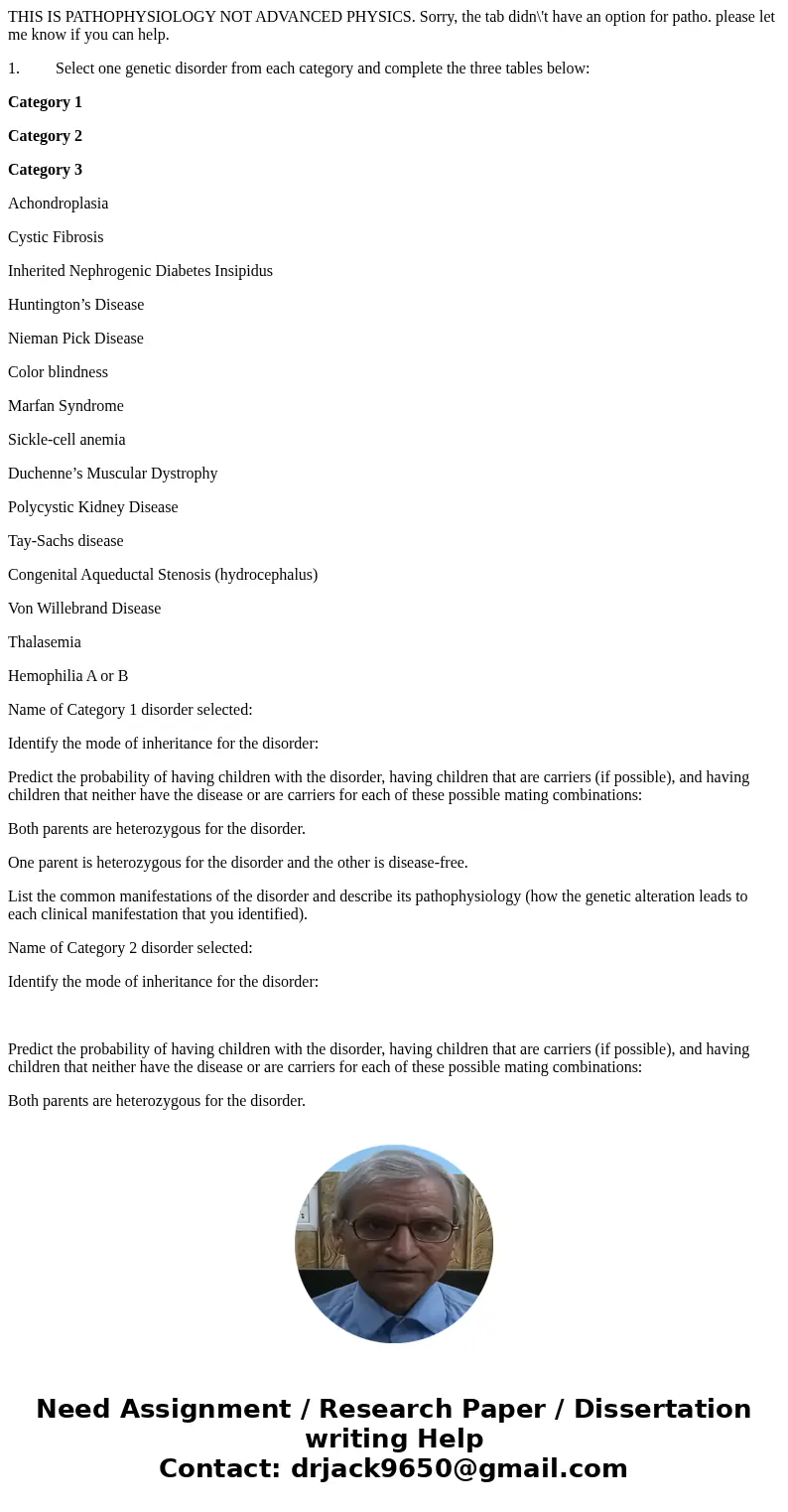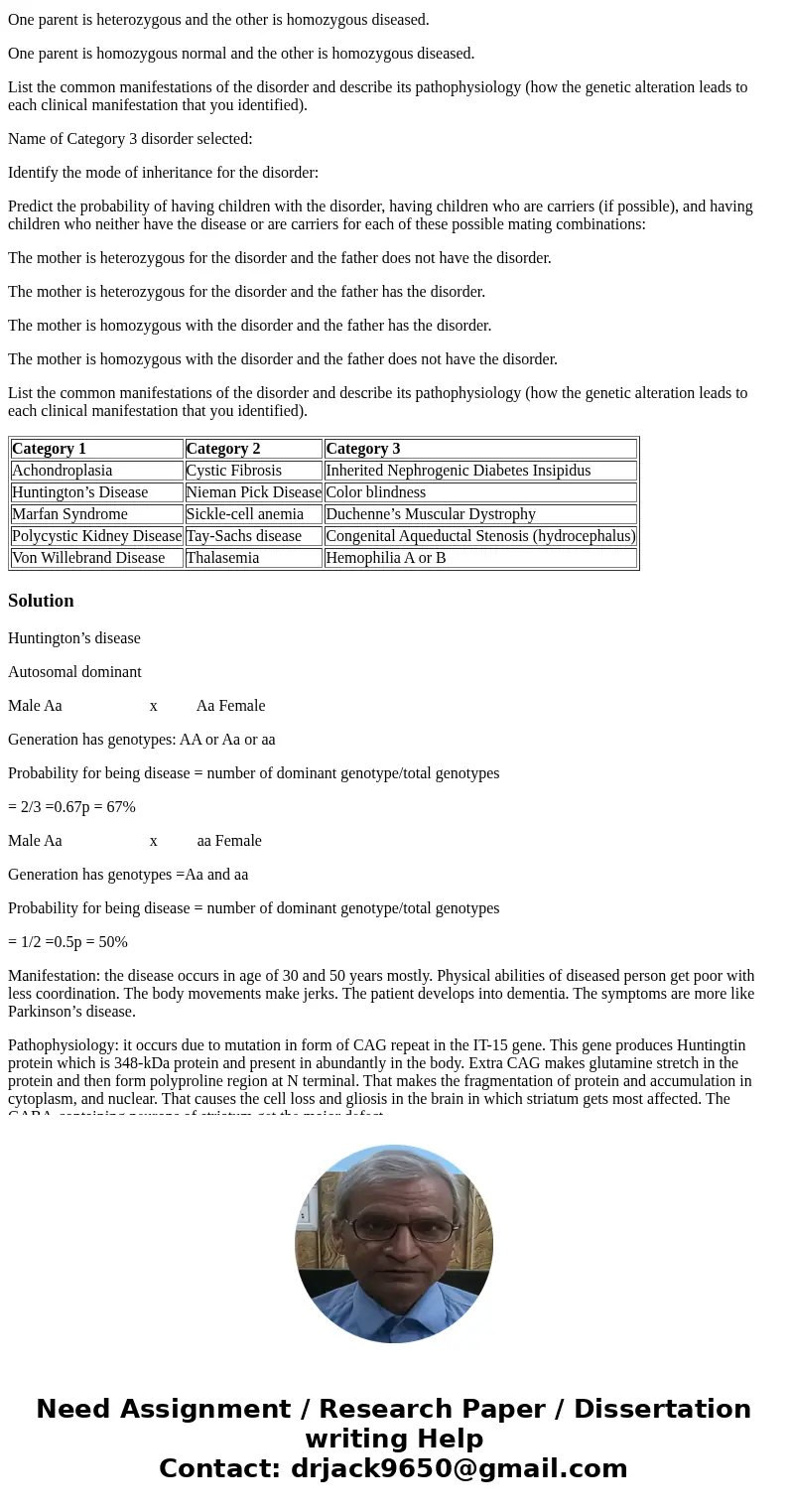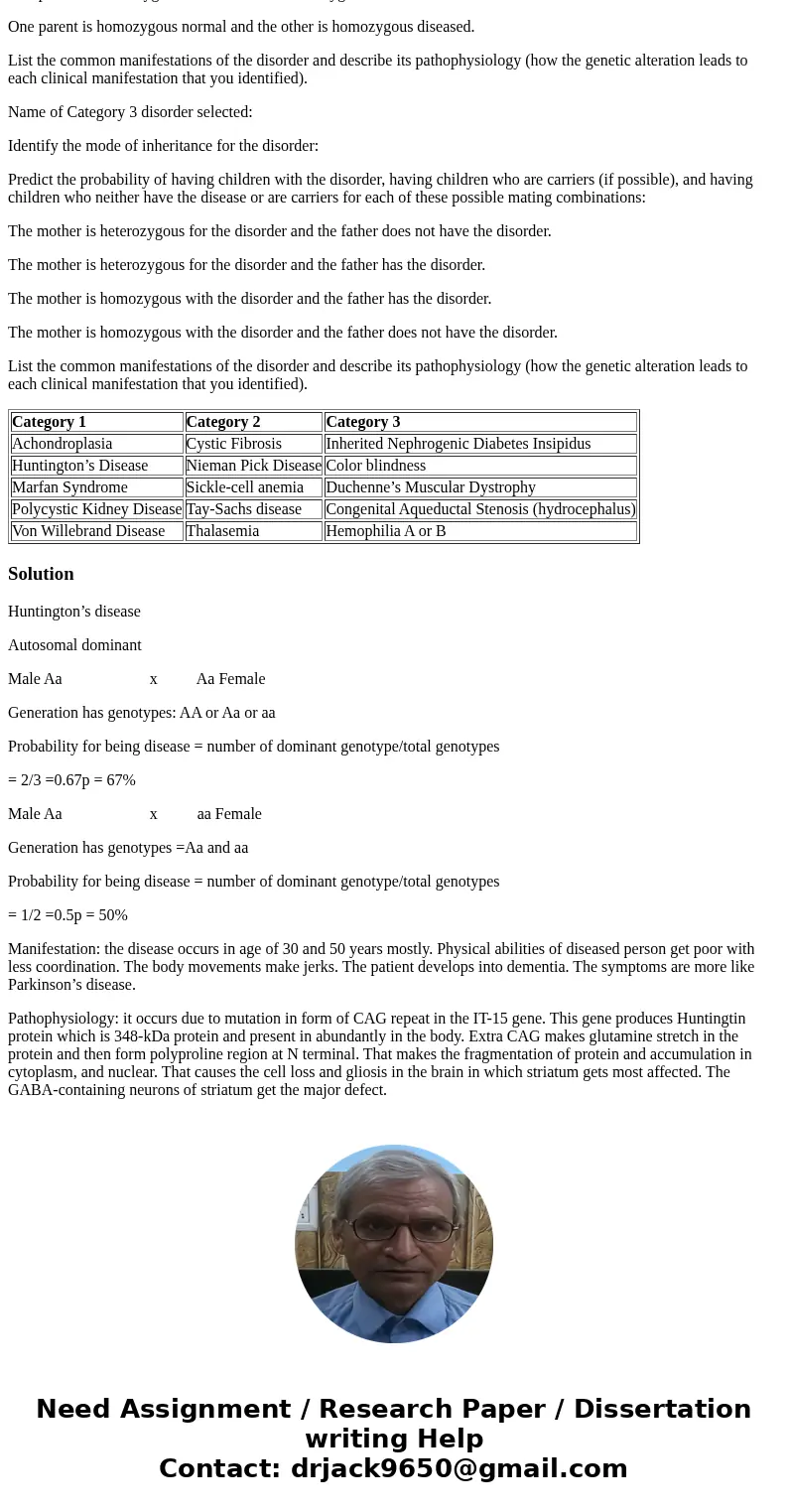THIS IS PATHOPHYSIOLOGY NOT ADVANCED PHYSICS Sorry the tab d
THIS IS PATHOPHYSIOLOGY NOT ADVANCED PHYSICS. Sorry, the tab didn\'t have an option for patho. please let me know if you can help.
1. Select one genetic disorder from each category and complete the three tables below:
Category 1
Category 2
Category 3
Achondroplasia
Cystic Fibrosis
Inherited Nephrogenic Diabetes Insipidus
Huntington’s Disease
Nieman Pick Disease
Color blindness
Marfan Syndrome
Sickle-cell anemia
Duchenne’s Muscular Dystrophy
Polycystic Kidney Disease
Tay-Sachs disease
Congenital Aqueductal Stenosis (hydrocephalus)
Von Willebrand Disease
Thalasemia
Hemophilia A or B
Name of Category 1 disorder selected:
Identify the mode of inheritance for the disorder:
Predict the probability of having children with the disorder, having children that are carriers (if possible), and having children that neither have the disease or are carriers for each of these possible mating combinations:
Both parents are heterozygous for the disorder.
One parent is heterozygous for the disorder and the other is disease-free.
List the common manifestations of the disorder and describe its pathophysiology (how the genetic alteration leads to each clinical manifestation that you identified).
Name of Category 2 disorder selected:
Identify the mode of inheritance for the disorder:
Predict the probability of having children with the disorder, having children that are carriers (if possible), and having children that neither have the disease or are carriers for each of these possible mating combinations:
Both parents are heterozygous for the disorder.
One parent is heterozygous and the other is homozygous diseased.
One parent is homozygous normal and the other is homozygous diseased.
List the common manifestations of the disorder and describe its pathophysiology (how the genetic alteration leads to each clinical manifestation that you identified).
Name of Category 3 disorder selected:
Identify the mode of inheritance for the disorder:
Predict the probability of having children with the disorder, having children who are carriers (if possible), and having children who neither have the disease or are carriers for each of these possible mating combinations:
The mother is heterozygous for the disorder and the father does not have the disorder.
The mother is heterozygous for the disorder and the father has the disorder.
The mother is homozygous with the disorder and the father has the disorder.
The mother is homozygous with the disorder and the father does not have the disorder.
List the common manifestations of the disorder and describe its pathophysiology (how the genetic alteration leads to each clinical manifestation that you identified).
| Category 1 | Category 2 | Category 3 |
| Achondroplasia | Cystic Fibrosis | Inherited Nephrogenic Diabetes Insipidus |
| Huntington’s Disease | Nieman Pick Disease | Color blindness |
| Marfan Syndrome | Sickle-cell anemia | Duchenne’s Muscular Dystrophy |
| Polycystic Kidney Disease | Tay-Sachs disease | Congenital Aqueductal Stenosis (hydrocephalus) |
| Von Willebrand Disease | Thalasemia | Hemophilia A or B |
Solution
Huntington’s disease
Autosomal dominant
Male Aa x Aa Female
Generation has genotypes: AA or Aa or aa
Probability for being disease = number of dominant genotype/total genotypes
= 2/3 =0.67p = 67%
Male Aa x aa Female
Generation has genotypes =Aa and aa
Probability for being disease = number of dominant genotype/total genotypes
= 1/2 =0.5p = 50%
Manifestation: the disease occurs in age of 30 and 50 years mostly. Physical abilities of diseased person get poor with less coordination. The body movements make jerks. The patient develops into dementia. The symptoms are more like Parkinson’s disease.
Pathophysiology: it occurs due to mutation in form of CAG repeat in the IT-15 gene. This gene produces Huntingtin protein which is 348-kDa protein and present in abundantly in the body. Extra CAG makes glutamine stretch in the protein and then form polyproline region at N terminal. That makes the fragmentation of protein and accumulation in cytoplasm, and nuclear. That causes the cell loss and gliosis in the brain in which striatum gets most affected. The GABA-containing neurons of striatum get the major defect.



 Homework Sourse
Homework Sourse